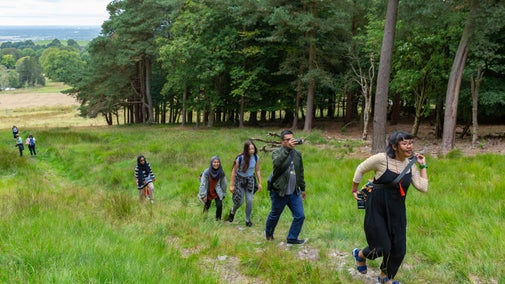
Find out more about Dunwich Heath
Find out how to get to Dunwich Heath, where to park, things to see and do, and more.
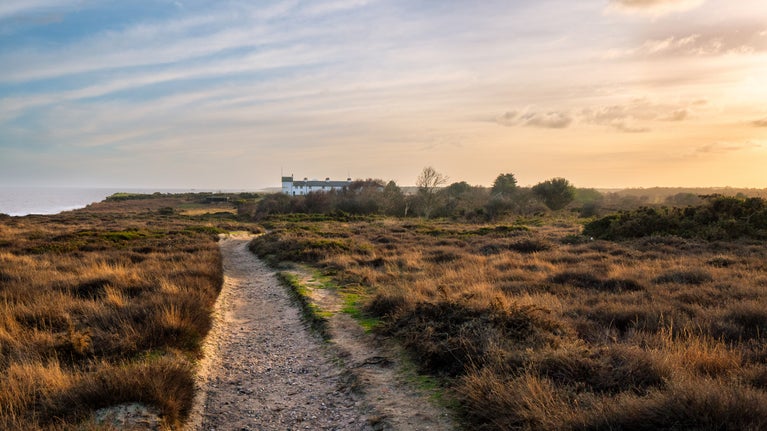
Dunwich Heath is a precious landscape on the Suffolk coast.
A diverse range of species live in its many varied habitats, which include areas of traditional heathland, acid grassland, woodland, wetland, beach and cliffs.
If you love nature, you'll be spoilt for choice whatever the time of year - just remember to follow our signposted trails and bring your binoculars to make the most of the view.
Our pink walk covers most of the heathland and offers plenty of chances to see a variety of heathland birds, including stonechats, skylarks and Dartford warblers.
Head down to the beach and spend some time sitting on the shingle, or walk along the clifftop path for the best chance of spotting seabirds.
Follow the grey walk for reedbirds and waders. The more southerly section along Docwra’s Ditch is perfect, and there are benches dotted along its length to stop and search with your binoculars.
If you want to see woodland birds, we recommend the orange or pink routes.
The nights may be drawing in, but there’s still plenty to do and see on these shorter autumnal days.
The autumn migration brings a wealth of birdwatching opportunities along the Suffolk coast as we welcome winter visitors, including redwing, fieldfare and meadow pipits.
Flocks of barnacle geese returning from their daytime feeding grounds are a sure sign that autumn has arrived. Their haunting calls fill the dusk air as they skirt along the shoreline and come to rest on the Minsmere Levels.
If you're lucky and they roost nearby, you may also see starlings gathering in huge numbers. The vast flock, or ‘murmuration’, swirls over the reedbeds and often form mesmerizing patterns before settling in to roost amongst the reeds.
In autumn, the annual deer rut gets underway, as red deer stags gather the females together and defend them from other males. You can hear the stags roaring throughout the breeding season between September and November.
Hedgerows laden with berries, acorns and chestnuts also attract a wide variety of wildlife - and look out for spectacular fungi, too, including bright red fly agaric toadstools and huge parasol mushrooms.
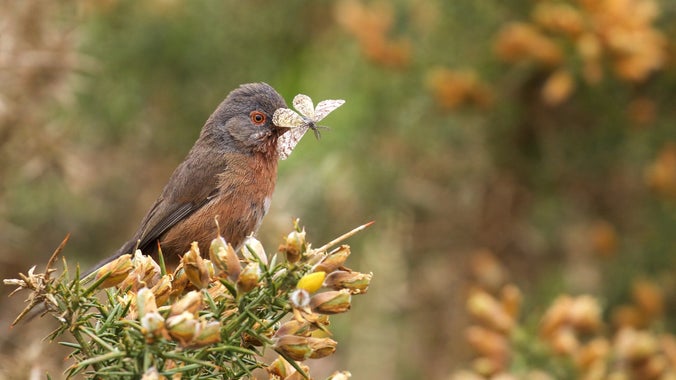
Dunwich Heath is famous for its bird life. The habitats are home to a number of resident species, along with others that migrate here for the summer or winter. Of those that live here permanently, there are a number of very rare species that it's illegal to disturb, including the Dartford warbler and the skylark.
Some of our recent sightings are shared below.
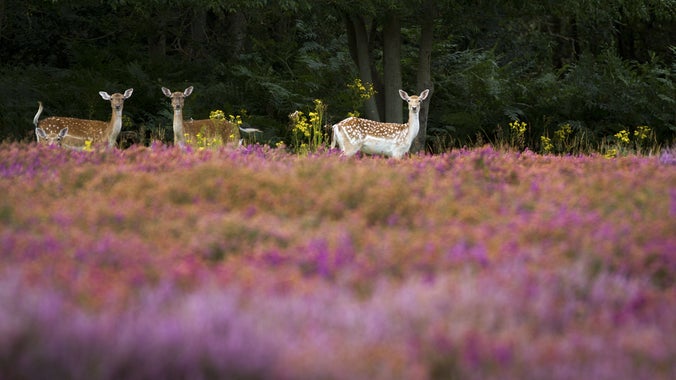
Autumn and winter are the best times of the year for spotting deer, although they can be surprisingly hard to see. For the best chance, head along the diagonal orange path through the heath, turn left and then follow the pink walk back to the car park.
Female deer, known as hinds, occasionally appear with their calves in the summer, but for glimpses of the magnificent stags, then the colder months are best, especially when the annual rut happens in the autumn and the males defend their territory in pursuit of female mates.

Find out how to get to Dunwich Heath, where to park, things to see and do, and more.
Dunwich Heath is a three pawprint rated place. The nature reserve is a wonderful place to explore with your dog. Here’s all you need to know about visiting with your four-legged friend.

Dunwich Heath has a surprisingly turbulent past, from being a smugglers' haven and coastguard station, to a training area for D-Day.

There are many different ways that volunteering with the National Trust at Dunwich Heath can benefit you. Find out more about the roles and get in touch.

Enjoy the seasonal spectacle of purple heather in bloom with these walks across heathland and moorland.

Plan a visit to one of the special countryside places in our care and discover the benefits of being in the great outdoors. Pack your walking boots and get ready to explore woodlands, valleys and rivers.
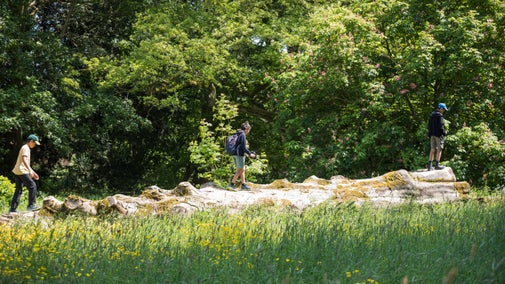
Explore the varied landscape of Suffolk, including heathland, an Anglo-Saxon burial ground and scenery made famous by the landscape artist John Constable.

Explore some of the finest landscapes in our care on coastal paths, accessible trails, woodland walks and everything in between. Find the best places to walk near you.
